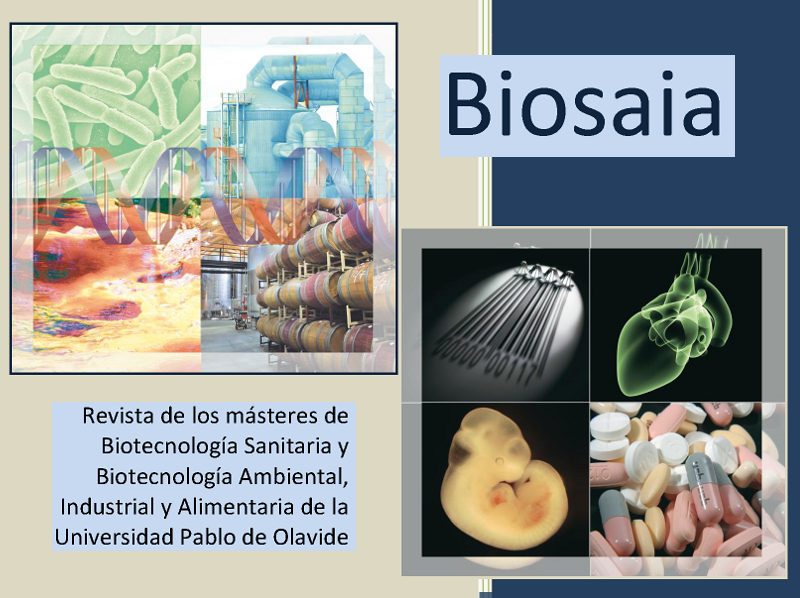Metabarcoding for pathogens control in soils
Palabras clave:
Macrophomina , Blueberry , MetabarcodingResumen
Blueberry cultivation is becoming increasingly important in Spain. There is currently a tendency to reconvert soils previously used for strawberry cultivation to blueberries, which could produce the transmission of common pathogens such as Macrophomina phaseolina (Ijaz et al., 2013). The use of chemical antifungals has been the common method used to prevent this kind of infection but, due to their high environmental impact, legislation is increasingly restricting its use which makes it necessary to look for new alternatives such as biocontrol strategy
.
This project aim was to identify the main rhizospheric microorganisms implicated in blueberry plant survival or death and to analyse the repercussions of three treatments used against Macrophomina.
Two of the treatments use a biocontrol strategy and a third one supplied the plant with nutrients inputs. The biocontrol treatments consisted of a mix composed of Pseudomonas aeruginosa and Bacillus velezensis strains with growth-promoting activities and antagonist effects against Macrophomina coming from the IFAPA-Las Torres collection, and a second one with Bacillus amyloliquefaciens. The third is a mix of Nitrogen, Phosphorus, Potassium, aminoacids and microorganisms . We characterized blueberry’s rhizosphere from healthy and dead plants from the three treatments plus a control using metabarcoding, bacteria were identified via the 16S and fungi via the ITS region.
All treatments modified the soil microbiome, especially the bacteria population. Although infection with M. phaseolina was the cause of plant death, the presence of Fusarium, another blueberry fungus pathogen, seemed to favour the infection and weaken the plant (Israel et al., 2005). On the other hand, the higher abundance of Penicillium or Gaiella in the rhizosphere of healthy plants could be related to increased resistance against Macrophomina (Altaf et al., 2018; Qi et al., 2019). From all the treatments tested, the one coming from the IFAPA-Las Torres collection was the best in modifying the rhizosphere most efficiently, favouring the proliferation of microorganisms with plant growth-promoting activities and pathogens antagonists.
The different microorganisms detected between death and healthy plants open the possibility of studying new targets to act against and potential microorganisms to be used in biocontrol.
Descargas
Citas
Altaf, M. M., Imran, M., Abulreesh, H. H., Khan, M. S. A., & Ahmad, I. (2018). Diversity and Applications of Penicillium spp. in Plant-Growth Promotion. In New and Future Developments in Microbial Biotechnology and Bioengineering (pp. 261–276). Elsevier. doi:10.1016/B978-0-444-63501-3.00015-6
Ijaz, S., Sadaqat, H. A., & Khan, M. N. (2013). A review of the impact of charcoal rot ( Macrophomina phaseolina ) on sunflower. The Journal of Agricultural Science, 151, 222–227.doi:10.1017/S0021859612000512
Israel, S., Mawar, R., & Lodha, S. (2005). Soil solarisation, amendments and bio-control agents for the control of Macrophomina phaseolina and Fusarium oxysporum f.sp. cumini in aridisols. Annals of Applied Biology, 146, 481–491.doi: 10.1111/j.1744-7348.2005.040127.x
Qi, G., Ma, G., Chen, S., Lin, C., & Zhao, X. (2019). Microbial Network and Soil Properties Are Changed in Bacterial Wilt-Susceptible Soil. Applied and Environmental Microbiology, 85. doi:10.1128/AEM.00162-19
Descargas
Publicado
Cómo citar
Número
Sección
Licencia
Derechos de autor 2022 Biosaia: Revista de los másteres de Biotecnología Sanitaria y Biotecnología Ambiental, Industrial y Alimentaria

Esta obra está bajo una licencia internacional Creative Commons Atribución-NoComercial-CompartirIgual 4.0.





